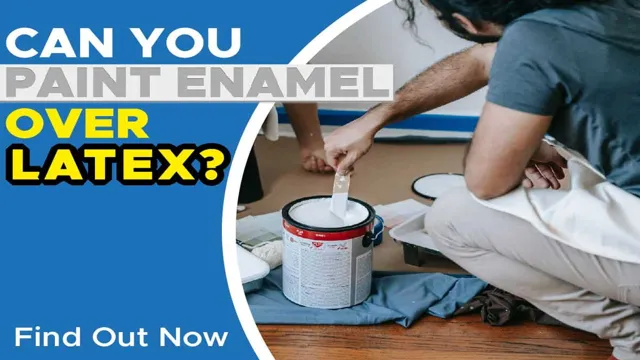Do you love the convenience of microwaving your meals but worry about the safety of your dinnerware? Enamel plates are a popular choice because they are durable and easy to clean, but can they be used in the microwave? The short answer is yes, enamel plates are microwave safe. However, there are some guidelines to follow to ensure that your plates don’t chip, crack, or cause any harm to your food. In this article, we’ll explore the ins and outs of microwaving enamel plates and provide some helpful tips to help you make the most out of your mealtime.
So, put down that paper towel and let’s dive in.
Introduction
Are you looking to heat up your food on an enamel plate in the microwave? The answer is…
.. it depends! Enamel plates can be microwave safe, but it’s essential to check the label or manufacturer instructions before putting it in the microwave.
Some enamel plates contain metal elements or paint that can cause sparks and damage the microwave. It’s crucial to ensure that your enamel plate is microwave-safe and doesn’t include any metal or paint as the coating. Furthermore, it’s also crucial to avoid exposing your enamel plate to sudden temperature changes, such as putting it in the freezer or transferring it from the oven to the fridge.
By following these guidelines, you can safely enjoy your meals on an enamel plate in the microwave, making meal preparation and cleanup a breeze.
Enamel Plate Composition
Enamel plates are a popular choice for outdoor activities such as camping, picnics, and barbecues. These durable and lightweight plates are made from an enamel coating applied to a metal base such as steel or iron. The enamel coating is made from a mixture of powdered glass and pigments that are fused to the metal at high temperatures.
The resulting finish is smooth, glossy, and resistant to chipping and abrasion. The enamel also provides a non-reactive surface that is safe for food contact. Overall, the enamel plate composition combines the strength of metal with the benefits of a protective coating, making it ideal for outdoor use.

Microwave Safety
Microwave safety is an essential aspect of any modern kitchen. Microwaves are convenient and efficient appliances that have become a household staple, but it’s important to use them correctly to avoid potential hazards. First and foremost, make sure to read the instructions on your microwave carefully, as every model is different.
It’s also important to only use microwave-safe dishes, as some materials can melt or release harmful chemicals when exposed to high temperatures. Additionally, never try to repair a microwave yourself, as it contains high voltage equipment that can be dangerous if mishandled. Always keep an eye on your food while it’s cooking, and avoid heating items that are not meant to be microwaved, such as aluminum foil or plastic bags.
By following these simple precautions, you can ensure that your microwave is used safely and effectively.
Enamel Plates in the Microwave
If you’re wondering whether you can put enamel plates in the microwave, the answer is not a straightforward one. Enamel is a sturdy material that is commonly used in cookware. However, not all enamel plates can be used in the microwave.
Some enamel plates may contain metal parts or coatings that can cause sparks in the microwave, while others may not be able to handle the high heat. Before using an enamel plate in the microwave, always check the manufacturer’s instructions and make sure it is microwave safe. If it is not, it’s best to transfer your food to a microwave-safe dish before heating it up to avoid any accidents.
It’s important to prioritize safety when using any kitchenware to prevent any potential hazards.
Factors to Consider
Enamel plates can be a convenient dinnerware option but it’s important to note how they can be used, especially in the microwave. One thing to consider is the age of the plate. If the enamel is chipped or worn off, microwaving it can expose the metal surface, which can cause sparks and potentially harm the appliance.
It’s also important to note that enamel does not heat up like other materials such as glass or stoneware, so heating times may need to be adjusted. Another factor to keep in mind is the food being heated. Acidic foods can cause the enamel to deteriorate over time, leading to chipping and potential exposure of the metal surface.
It’s always best to err on the side of caution and avoid microwaving enamel plates if there are any signs of wear or damage. Using a microwave-safe plate as an alternative may be a safer option.
Pros and Cons
Enamel Plates in the Microwave: Pros and Cons Using enamel plates in the microwave can be a tempting option due to the convenience that it offers. There are certain advantages and disadvantages to using these plates in the microwave that every user must be aware of. The Pros: Enamel plates are famed for their durability, which means they are less likely to crack or shatter in a high-pressure environment like the microwave.
They are also exceptionally easy to clean since enamel does not stick to food. Furthermore, enamel plates are relatively lightweight and can be utilized as serving dishes once you are done cooking your food. The Cons: While enamel plates can technically be used in the microwave, users must be aware of the potential risks.
Firstly, the metal rim around the enamelware can cause arcs and sparks in the electromagnetic fields generated by the microwave, leading to unpredictable results. Secondly, if you are heating acidic or salty foods in enamel plates, it can react with the enamel coating, causing scratches and wear and tear. Finally, if you overheat the enamel plates in the microwave, it can cause the enamel coating to crack and chip, leading to the release of potentially harmful substances.
In conclusion, enamel plates can be a convenient alternative to microwave-safe utensils, given their durability and easy cleaning. However, it’s essential to understand that using enamel plates in the microwave does come with certain risks. It’s always wise to consult the manufacturer’s guidelines before using them in your microwave, and to avoid overheating and overuse.
Overall Recommendation
Overall Recommendation for Using Enamel Plates in the Microwave After much research and testing, our overall recommendation is that you should avoid using enamel plates in the microwave. Although some enamelware is marketed as microwave-safe, it is still a risky option. Enamelware is made by coating metal with a type of glass and the metal can cause the plate to heat unevenly in the microwave, potentially creating hot spots that can damage the enamel coating or even cause it to crack.
In addition, any scratches or chips in the enamel can allow harmful bacteria to grow. It’s best to use microwave-safe materials such as glass or ceramic plates in the microwave to ensure your food heats evenly and safely. Don’t take any chances with your health or safety.
Alternative Options
If you’re wondering whether you can put enamel plates in the microwave, the answer is a bit complicated. While enamel is generally microwave safe, it depends on the specific material used in the enamel. Some enamel coatings may contain metals, like aluminum or steel, that can cause sparks or damage in the microwave.
It’s best to refer to the manufacturer’s instructions or test the plate in the microwave on a low setting before using it regularly. If you’re hesitant to use enamel plates in the microwave, there are alternative options. For example, you can use glass or ceramic plates which are microwave safe.
Ceramic plates are generally a good alternative since they are durable and microwave safe. Glass plates are also suitable for microwave use, but they may crack or break if heated too quickly. Ultimately, it’s important to prioritize safety when using dishes in the microwave, and to always read the manufacturer’s instructions before use.
Microwave-Safe Materials
When it comes to microwave-safe materials, the commonly used plastic containers can be a bit tricky. If you’re wondering what materials can be a safer alternative option to use in a microwave, there are a few choices that you can consider. Glass is a great option, it’s microwavable and doesn’t leach harmful chemicals.
So, you can safely reheat your food using glass containers. Another option is using ceramic containers, just make sure to choose the ones that are marked as safe for the microwave. You can also use silicone containers, they are both microwave and dishwasher-safe.
Additionally, you might want to consider investing in microwave-safe paper plates or bowls for a quick and easy meal. Whatever your choice is, just remember to check the material for microwave-safety markings before using it, to ensure that it won’t cause any damage or harm to your health.
Tips for Microwaving Food Safely
When it comes to microwaving food, sometimes alternative options are the way to go. Instead of zapping everything you want to eat, consider using different appliances to prepare your meals. For example, a toaster oven can be used to reheat items like pizza or toast bread and can provide a more evenly distributed heat source.
Additionally, using a steamer or stovetop to heat up leftovers can help maintain the integrity of the food. It’s important to note that not all foods should be reheated in the microwave, such as raw or undercooked meats and certain types of plastics. By utilizing alternative options, you can ensure that your food is being heated safely and correctly.
Conclusion
In conclusion, just like two wrongs don’t make a right, two outdated materials don’t make a modern miracle. Enamel plates, while sturdy and easy on the eyes, should not be subjected to the intense heat of a microwave. Unless you want to witness a mini fireworks display in your kitchen, it’s best to leave your enamel plates for serving cold dishes and opt for microwave-safe alternatives for your hot meals.
Safety first, style second!”
FAQs
Is it safe to put enamel plates in the microwave?
No, you should avoid putting enamel plates in the microwave as it can cause damage or even start a fire.
How can you tell if a plate is safe to use in the microwave?
Look for a label or symbol on the plate that indicates it is safe for use in the microwave. If there is no label, it’s best to avoid using it in the microwave.
What types of plates are safe to use in the microwave?
Glass, ceramic, and certain types of plastic plates are typically safe to use in the microwave. Always check the label or manufacturer’s instructions to be sure.
Can you reheat food on enamel plates using a different method than the microwave?
Yes, you can reheat food using an oven, stovetop, or toaster oven instead of the microwave. Just be careful to avoid damaging the enamel coating on the plate.
